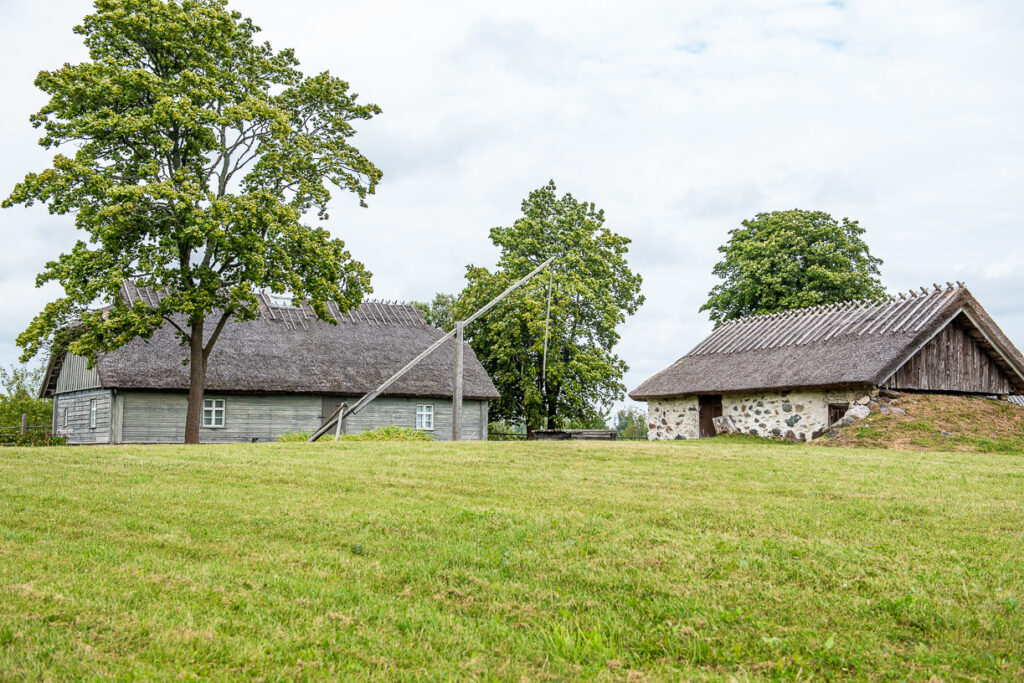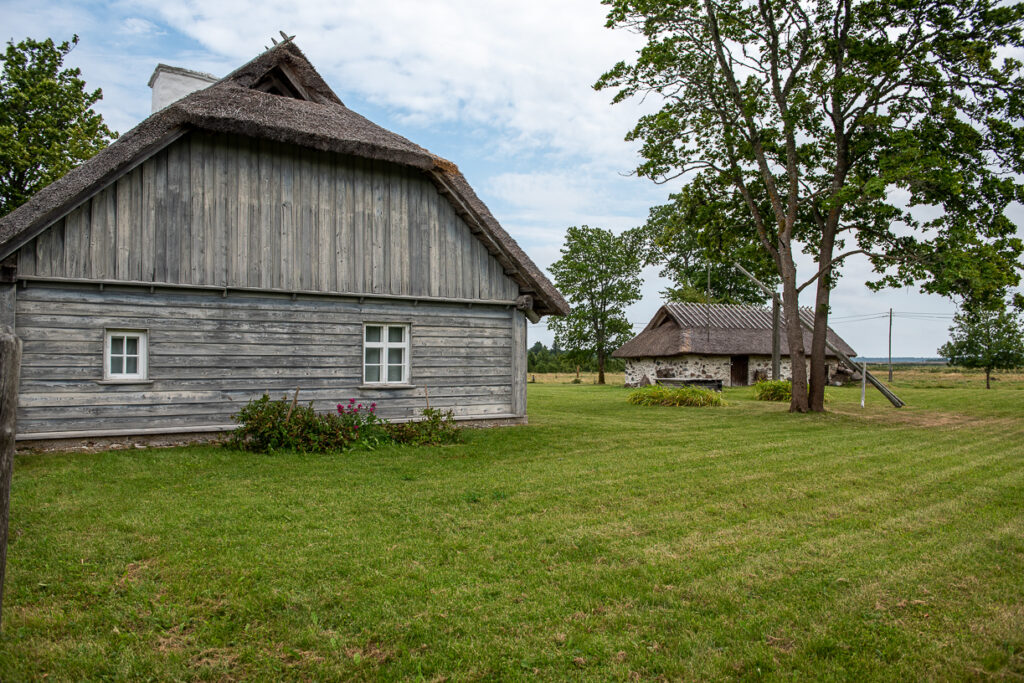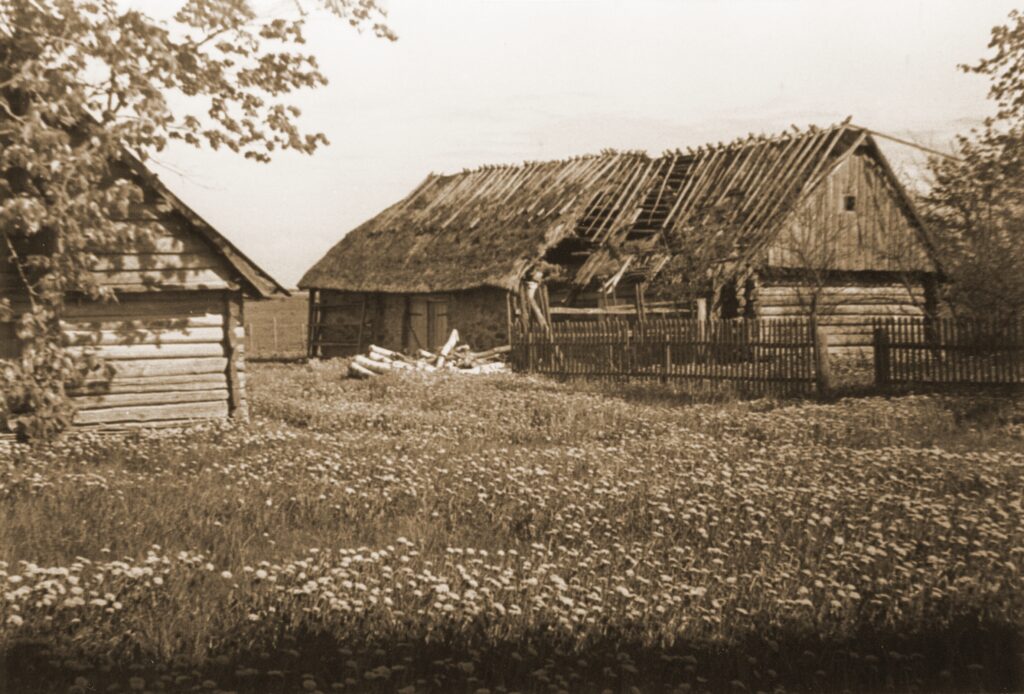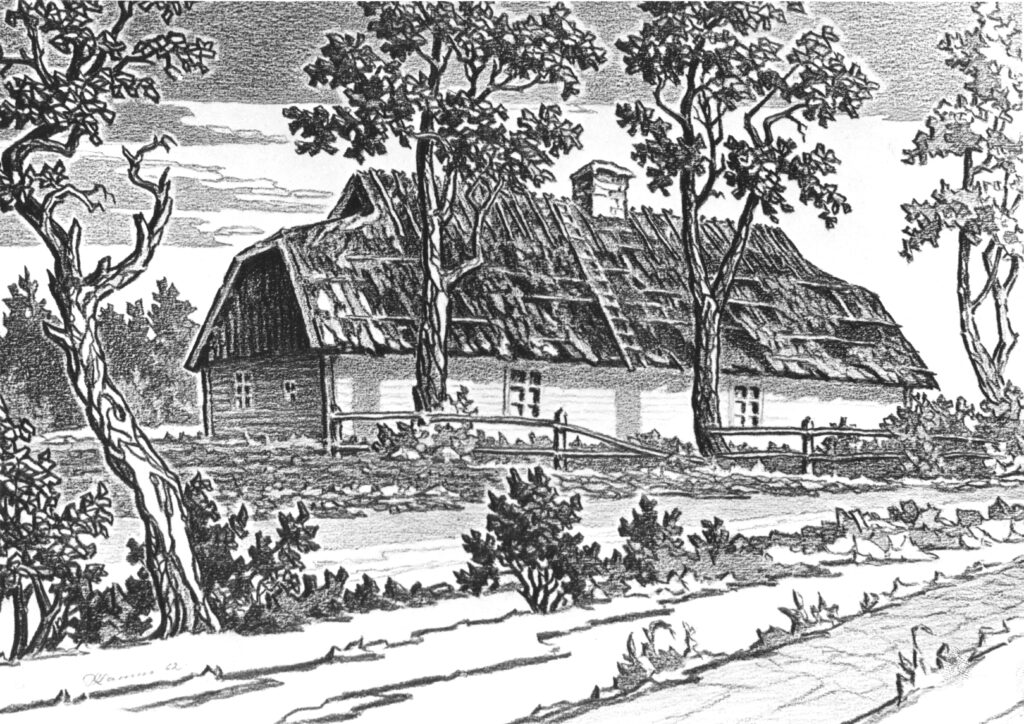The farmstead of the sacristans of Käina and the birthplace of Rudolf Tobias
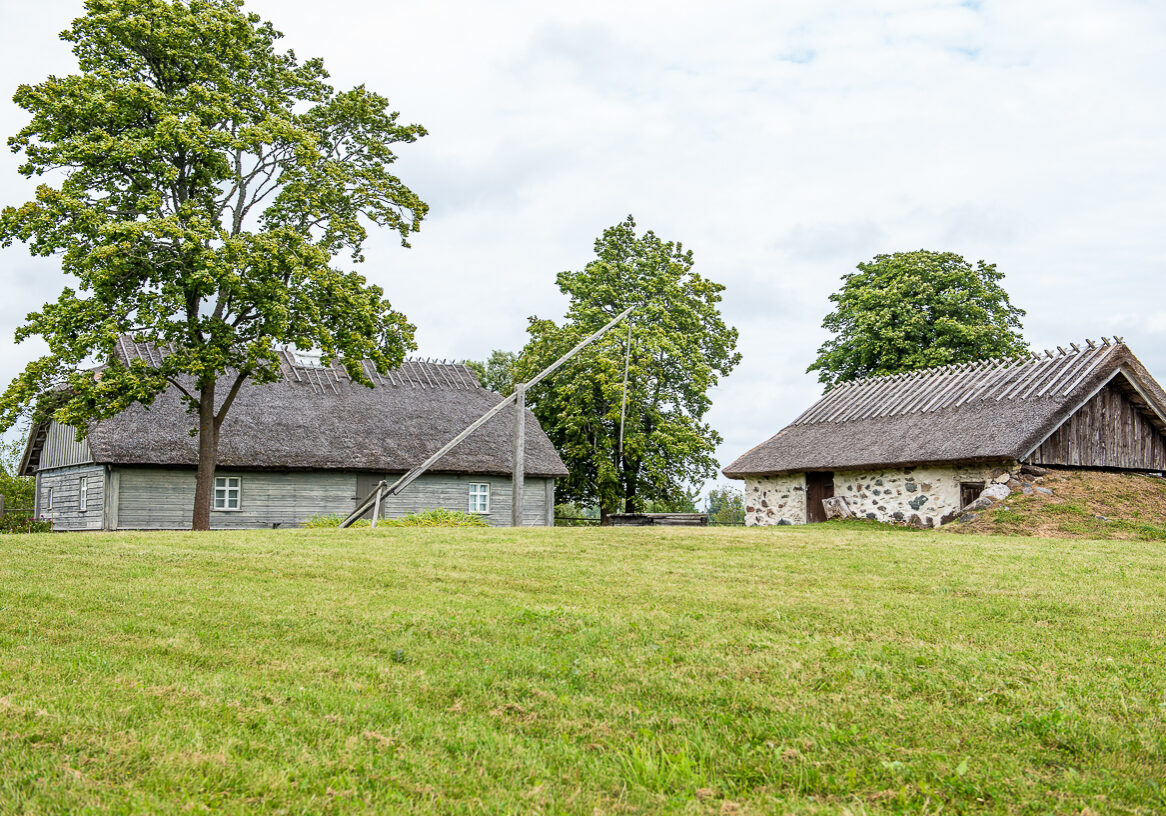
The first sacristans started working at the Käina Church already in the 17th century. At first, the sacristan’s home resembled an ordinary farm- stead of Hiiumaa, with its granaries, barns and the traditional threshing-room dwelling house. However, a new borough-style house was built for the sacristan who was invited to work here and came from the mainland in the 1830s. The stone cellar in the middle of the yard also dates back to the same or even earlier time. Starting from the 1930s, sacristans were no longer hired for the church; and the building was then used as an ordinary dwelling house.
The management of the collective farm “Käina Säde”, founded in 1948, decided to convert the old threshing-room dwelling house that was in the yard of the sacristan’s house into a pigsty and chicken coop for the collective farm.
In the 1950s, a plan was made to demolish all the buildings, but that idea was not implemented. Instead, in 1959, a memorial plaque informing that it was the birthplace of composer Rudolf Tobias was attached to the dwelling house. In 1973, a museum presenting his life and works was opened in the same house.
The wooden granary, which the museum has brought here from the Rootsiküla village, resembles the farmstead’s original granary, which, just like the old dwelling house, had fallen apart in the course of time. Also the windmill, which was originally situated in the pasture by the Käina Bay, was replaced by another one, brought here from Emmaste, Ole village, as recently as in 2003.
Gallery
It is a waypoint on the journey
You might also be interested in:

